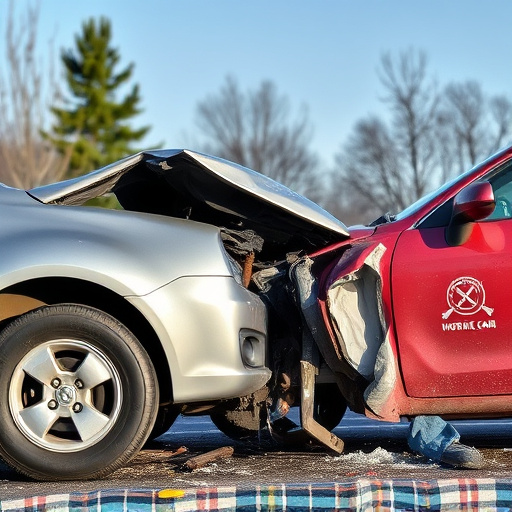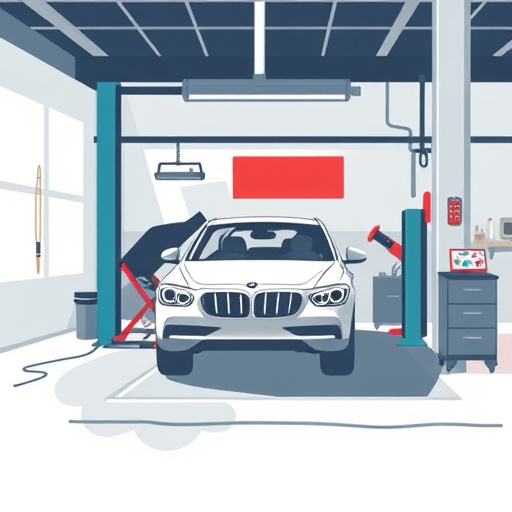Diminished value claims compensate vehicle owners for reduced resale value after accidents or damage, such as hail or minor crashes. While repairs restore appearance, they may not fully recapture pre-incident market value. Navigating these complex claims requires understanding appraisals, legal processes, and documentation. Strategic management involves comprehensive documentation, expert automotive body work analysis, and meticulous record-keeping for maximized reimbursements.
Is a diminished value claim still worth your time? In today’s automotive landscape, understanding these claims is crucial. This article delves into the fundamentals of diminished value (DV) claims, exploring their benefits and challenges. We provide strategic insights on managing DV cases efficiently. Whether you’re an auto enthusiast or an industry professional, this guide offers valuable knowledge to navigate these complex issues. By the end, you’ll be equipped to make informed decisions regarding diminished value claims.
- Understanding Diminished Value Claims: The Basics
- Benefits and Challenges of Pursuing These Claims
- Strategies for Efficiently Managing Diminished Value Cases
Understanding Diminished Value Claims: The Basics

Diminished value claims are a type of insurance coverage designed to compensate vehicle owners for the reduced value of their cars after an accident or damage. This concept is based on the idea that even with repairs, a vehicle’s market value may be impacted by visible damage, such as dents, scratches, or other aesthetic issues. In simple terms, if your car experiences hail damage or suffers a minor crash, a diminished value claim can help cover the difference between what you paid for it and its current worth after the incident.
These claims are particularly relevant when considering auto body services and repair processes. While scratch repair and hail damage repair are essential to restore a vehicle’s appearance, they may not always return it to its original condition. Diminished value claims step in to bridge this gap, ensuring that policyholders receive fair compensation for the loss of their car’s pre-incident market value. It’s an important aspect of automotive insurance, especially when navigating the complexities of repair costs and potential resale value adjustments.
Benefits and Challenges of Pursuing These Claims

Pursuing a diminished value claim can offer several benefits for individuals involved in accidents or experiencing vehicle damage. These claims are designed to compensate owners for the reduced value of their vehicles post-damage, which is often significant given the costly nature of auto repairs and body shop services. In many cases, especially with more severe incidents, the cost of restoring a vehicle to its pre-accident condition can surpass its original worth, leading to a substantial financial loss that isn’t always covered by insurance policies.
However, navigating diminished value claims comes with challenges. It requires a thorough understanding of appraisals and how damage affects a vehicle’s resale value. Additionally, these claims often involve complex legal processes and extensive documentation, which can be time-consuming and cumbersome for claimants. Auto painting services, while crucial in restoring the visual appeal, might not always restore the vehicle’s original value, especially if rare or specialized parts are involved. Therefore, success in diminished value claims hinges on meticulous record-keeping, expert advice, and a clear grasp of one’s rights and entitlements.
Strategies for Efficiently Managing Diminished Value Cases

Managing diminished value cases efficiently requires a strategic approach tailored to the unique challenges posed by each situation. First, thorough documentation is key. This includes meticulous record-keeping of all repairs and maintenance history, as well as detailed photographic evidence showcasing both pre and post-accident conditions of the vehicle. These records can help establish a clear narrative and justify any claims for compensation.
Second, leveraging the expertise of professionals in automotive body work and car paint repair is crucial. Skilled technicians can assess and quantify the diminution in value by comparing the damaged vehicle to its original condition and market value. This involves intricate analysis of the car bodywork, identifying subtle imperfections that might not be immediately apparent to untrained eyes. Utilizing these strategies ensures that diminished value claims are handled effectively, maximizing potential reimbursements for affected owners.
In light of the above discussions, it’s clear that pursuing diminished value claims can offer significant benefits, particularly in compensating for the reduced value of vehicles after accidents or damage. However, the challenges involved highlight the importance of efficient case management strategies. By understanding the basics and employing tailored approaches, individuals and legal professionals alike can make informed decisions about whether to pursue these claims, ensuring a smoother process and potentially favorable outcomes. Diminished value claims remain a viable option, but as with any legal endeavor, careful consideration and strategic navigation are key.














